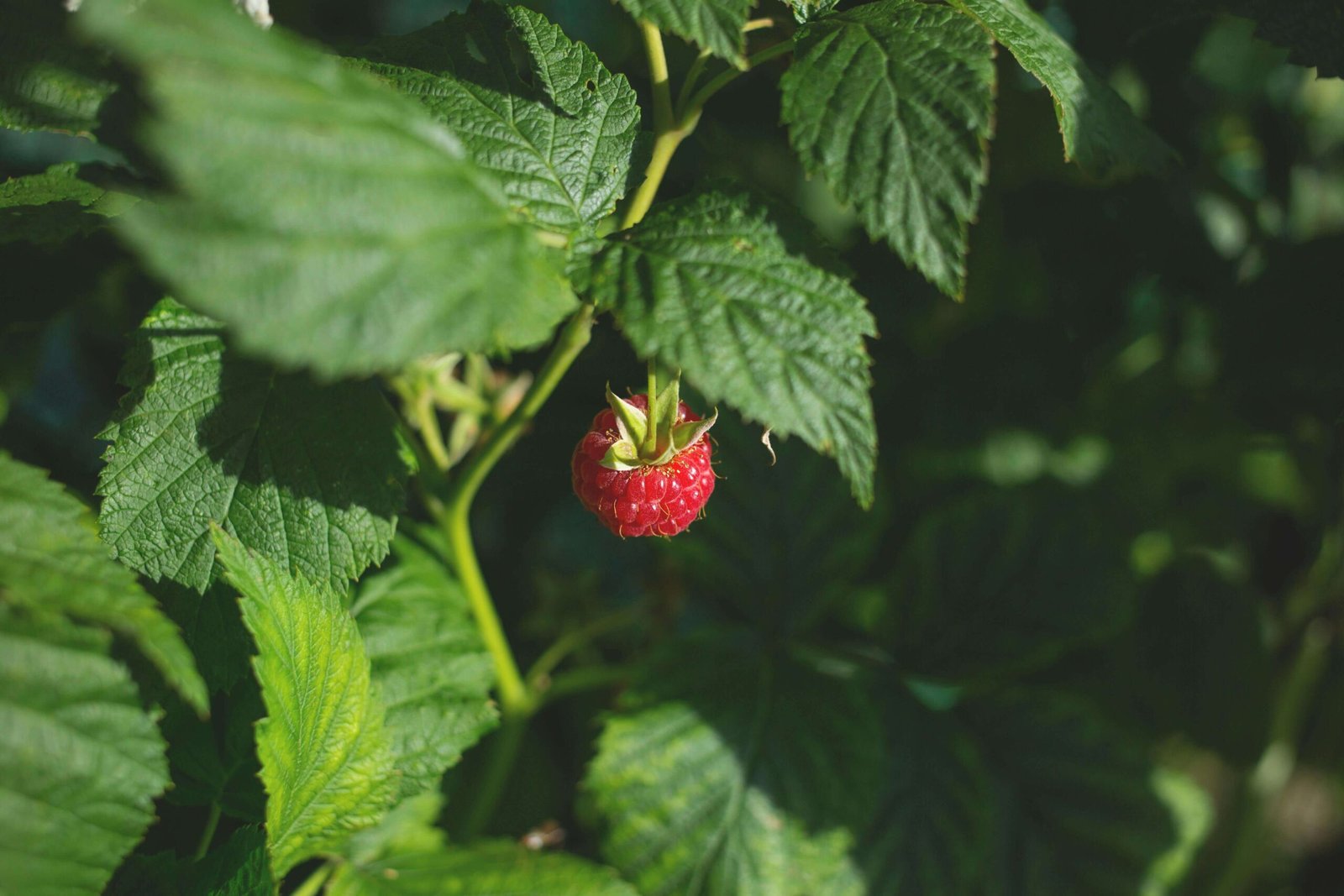Red raspberry leaf has been traditionally used as a remedy for centuries (some sources estimate 10,000 years), and legend has it that the plant’s Latin name, Rubus idaeus, comes from Mt. Ida in Turkey, where Greek Gods supposedly discovered the plant. Legend aside, there is evidence as far back as the 2nd century that records Roman medicinal use of the red raspberry leaf, in addition to the fruit, which was also used medicinally.
Historically, Linnaeus was responsible for the plant’s name. Early Roman usage of the red raspberry leaf included relief of uterine contractions during childbirth, as a remedy for stomach and throat ailments, and as a poultice for wounds and sores. Various American Indian tribes were also aware of the leaves’ astringent properties, and used raspberry leaf tea as an eyewash, to cleanse wounds, and to relieve diarrhea, dysentery, uterine hemorrhage, menstrual cramps, and runny noses.
Today, red raspberry leaves are most commonly used during pregnancy and birth; however, the list of their other medicinal uses is fairly extensive. Red raspberry leaves contain vitamins C, E, A, and some B complex, as well as essential minerals such as phosphorus, potassium, iron, zinc, and an easily absorbable form of calcium, making it a wonderfully nutritive plant. The astringent and antiseptic nature of the leaves helps to reduce inflammation, thereby making it a wonderful gargle for sore throats and poultice for wounds and burns.
The astringency of wet raspberry leaves applied directly to a wound reduces inflammation and tightens the mucous membranes, which helps to restore the skin’s firmness and reduce secretions. Red raspberry leaf tea also relieves menstrual cramps, stomach aches, diarrhea, and leg cramps, and is often prescribed to boost the immune system during flu season. It is also used to balance irregular menstrual cycles and to enhance fertility in both men and women.
For pregnant women, red raspberry tea is often prescribed to alleviate morning sickness and to counter anemia during pregnancy. The vitamins present in raspberry leaves not only boost a pregnant woman’s immune system but also facilitate healthy bone and skin development for the baby. The abundance of calcium in the leaves contributes to the baby’s bone development and works to control nerve response to pain during childbirth.
Red raspberry leaves also play an important role in childbirth, as they contain an essential alkaloid called fragrant that helps to tone uterine muscles. This alkaloid helps the uterus to contract more effectively during labor and aids in the expulsion of retained placentas. The vitamins and minerals in the leaves also help to reduce blood loss after birth, and the high levels of minerals often help breast milk to come in, although in some women, the leaves’ astringent properties might hinder this process.
While some sources suggest that red raspberry leaf tea should not be taken until the third trimester of pregnancy due to the possibility of miscarriage, studies have shown that there is no proven link connecting the tea with miscarriage, as fragrance does not cause contractions or make them stronger, but merely helps to enhance their effectiveness. A poultice of wet raspberry leaves can also be used as a cure for mastitis in breastfeeding women.
While many factors contribute to a healthy and straightforward pregnancy and birth, many women claim that red raspberry leaf helped them, above all, to give birth easily and quickly. Scientific studies have also shown higher incidences of uncomplicated births in women who have taken red raspberry leaf consistently, though there is no consensus that the leaf is responsible for these outcomes.
I must add, however, that between a healthy diet, regular exercise, and an abundance of red raspberry leaf tea, my daughters were born in four hours and two-and-a-half hours, respectively. I’ll never know what did the trick, but the abundance of essential vitamins and minerals in the red raspberry leaf can only contribute to the body’s health and balance, pregnant or not.
Red raspberry leaf can be found in health food stores, and many varieties of pregnancy teas combine raspberry leaf with other nutritive herbs. To prepare your tea, boil one ounce of dried raspberry leaves in a pot of water.
Alternatively, boil one ounce of dried leaves in a pint of water to brew an infusion. Cover for up to 24 hours to make the infusion extremely potent. For a poultice, simply wet the leaves and apply to the affected area.
References:
- 1. http://www.bcraspberries.com/origins/index.htm
- 2. http://en.wikipedia.org/wiki/Red_raspberry_leaf
- 3. http://botanical.com/botanical/mgmh/r/raspbe05.html#med
Related Posts From Our Blog
- Sleep Lean Review 2025. Critical Analysis Of Scam Complaints
- Mitolyn Reviews: Weight Loss Supplement’s Critical Analysis
- Nitric Boost Ultra Reviews (2025): Honest Research Analysis.
- Alpha Surge Reviews 2025 – Honest Look at Results, Risks & Value
- 5 Home Remedies For Neuropathy. Can These Stop Nerve Pain?
- Analyzed User Arialief Reviews, Complaints, & Scam Claims.
- Nerve Calm Reviews 2025. Scam-Check & Complaints Analyzed.
- 10 Natural Remedies for Enlarged Prostate. Science-Backed!
- Prostavive Reviews 2025: Scam or Legit Prostate Support?
We are a team of professional writers and healthcare professionals helping people with fact-based and informational content for the past many years. Our vision is to cretea a helpful community that helps everyone in living a healthy lifestyle.












Recent Posts